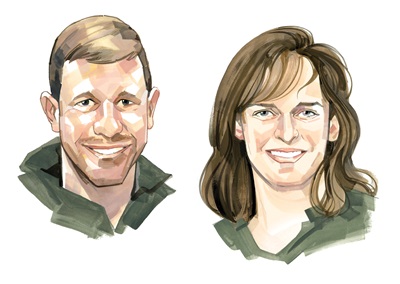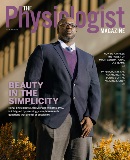
Each issue, we ask a trainee to pose their career questions to an established investigator and mentor. Here, Jonathan Herrera, an MD/PhD student at the University of Michigan and an APS 2020–2021 Porter Fellow, asks Tracy Baynard, PhD, associate professor and director of the Integrative Physiology Laboratory at the University of Illinois at Chicago, questions related to two of his interests: exercise physiology and diversity, equity and inclusion efforts.
Q: How valuable is exercise research in the context of health and disease?
A: As a clinical exercise physiologist, I am biased here, but researching the effects of exercise and physical activity on health and disease is extremely valuable to the biomedical community and society in general.
Acute exercise involves an integrated response that is not usually possible to assess during rest, such as might happen during a physical exam. For instance, we can assess cardiac, pulmonary and metabolic outcomes using indirect calorimetry from one exercise test using your modality of choice, such as a treadmill or cycle ergometer.
By assessing an integrated response with exercise, we can often uncover abnormalities that would not be seen otherwise. Furthermore, if we look at the bigger picture of how exercise is related to risk of disease, lower aerobic fitness is considered one of the most potent predictors of all-cause mortality. There is not one comorbidity that I can think of whereby aerobic fitness is not strongly associated with disease outcomes. In contrast, moving more or being more fit has repeatedly been found to be protective and is associated with longer life expectancy, with reduced health care costs, and greater quality of life over a longer duration of the lifespan.
I have often been at the table when others say, “We know exercise works. There’s no need to do this study.” Like many other physiological processes, there is so much we do not know. We are continuously adding to our understanding of mechanisms of exercise, what the correct dose of exercise is and, importantly, who benefits from what type of exercise and who may not. For example, studies examining sex, race/ethnicity and aging are all gaining more prominence.
These interactions are complex in a human system and critical to understand how we can mitigate risk with exercise, especially understanding how exercise, or rather lack of exercise in some cases, interacts with other lifestyle choices or interventions.
Q: How do we make more diverse, equitable and inclusive research environments a priority?
A: Timely question here and one that needs serious consideration across all aspects of research. First, as a research community, we all need to affirm this is a priority—this entails not only the individual scientists and their laboratories, but their department heads, their deans, their chancellors and presidents (if in industry, then the equivalent ranks)—and not just give it lip service.
But I also believe this extends much, much further than higher education and the research industry. As a society, value must be placed here, coupled with resources, starting in primary and secondary education that increases STEM awareness, confidence and aptitude. While progress is being made on this front, there is still a good bit to go. Further, role models must be elevated in order to have younger individuals, as well as their peers, identify with what is possible.
To increase diversity, equity and inclusivity, resources will need to be earmarked for existing and/or new initiatives. I am proud to see how the scientific community has recognized the importance of these areas over the years and how swiftly reflection on that progress took place recently to be more responsive to the needs of our various stakeholders.
The scientific community has taken important steps already, but I believe this is only the beginning to help bring meaningful and needed change. To make it a priority we must all demand it be a priority.
Got a career question you'd like to submit? Email it to tphysmag@physiology.org. We may use it in an upcoming Mentoring Q&A.
This article was originally published in the July 2021 issue of The Physiologist Magazine.
The Physiologist Magazine
Read the Latest Issue
Don’t miss out on the latest topics in science and research.
View the Issue Archive
Catch up on all the issues of The Physiologist Magazine.
Contact Us
For questions, comments or to share your story ideas, email us or call 301.634.7314.
“I had about an eight-month delay in getting my lab up and running because I literally had to start from scratch. … It was a process, but in the end, so rewarding.”


